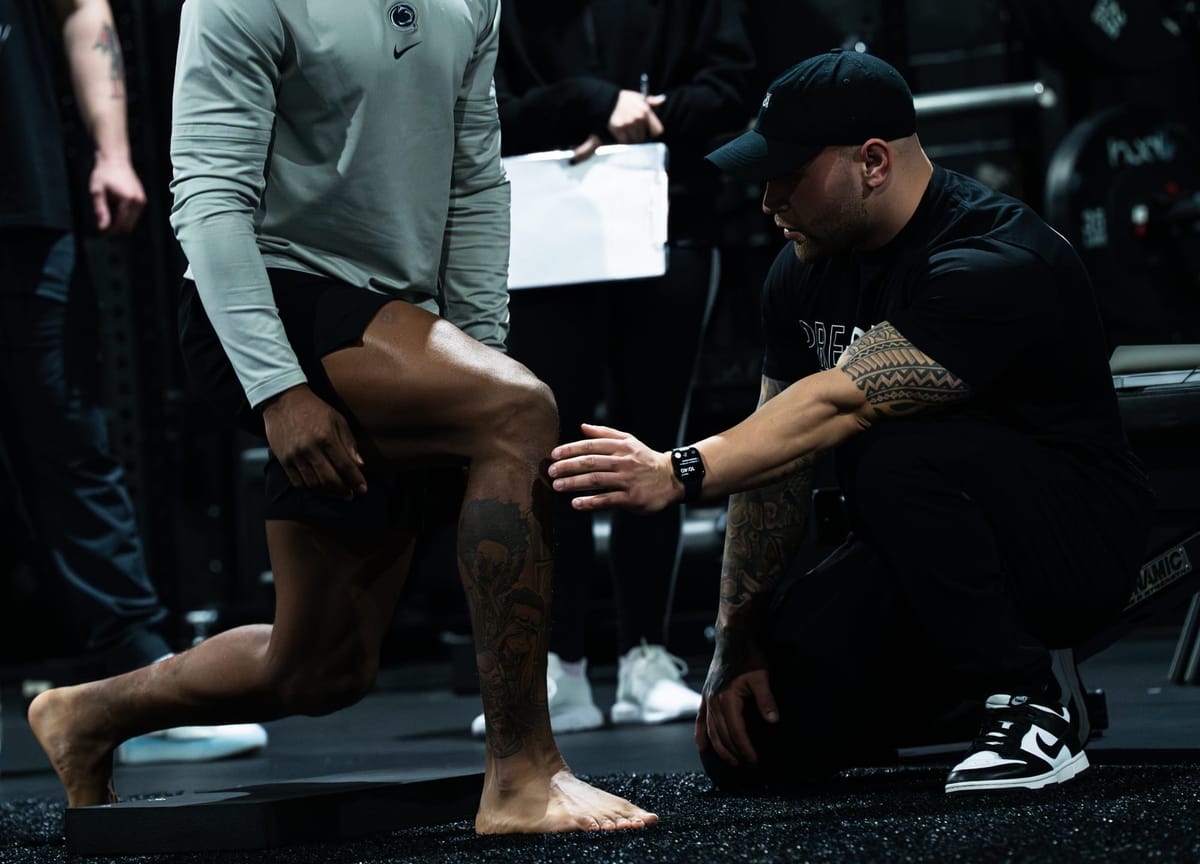
Tight calves aren't the problem – your foot needs to pronate to allow your ankle to move.
Limited ankle mobility is one of the most commonly cited ranges of motion restrictions in the entire body. Oftentimes, a scapegoat for pain throughout the lower body or just poor technique, it's rare to find someone who doesn't complain of poor ankle mobility.
And to be fair, the foot and ankle complex is one of the most intricate structure/function relationships in the entire body. Its dense network of irregularly shaped bones and ligaments leaves a lot of coaches confused about how to best manage issues.
In the process of solving foot and ankle-related issues, it's helpful to have a baseline understanding of how the foot and ankle are meant to interact both with each other and with the ground. The goal of this article will be to do just that, and in doing so, we'll be able to unlock one of the most common limitations to movement at the foot and ankle.
Defining the ankle: articulation of the tibia, fibula, and talus.
Let's start at the beginning: What is “the ankle”?
The ankle is something of a catch-all term that's often ill-defined. For the sake of this article, we’ll define the ankle as the coming together of three bones:
- Tibia (medial shin bone)
- Fibula (lateral shin bone)
- Talus (topmost bone of the foot)
Together, these three bones make up the ankle. The inside of the ankle is represented by the tibia, also known as the medial malleolus, and the outside of the ankle is represented by the fibula, also known as the lateral malleolus.
“Ankle Mobility” issues most often refer to someone's inability to move their tibia (shin) far enough ahead of their talus (in other words, dorsiflex) in order to perform a certain task. This lack of movement is usually blamed on the tightness of one's calf muscles, which would lengthen as the shin moves forward. However, blaming ankle mobility on the calf is massively short-sighted and doesn't take into consideration the intricacies of the structural interaction between the ankle and the foot.
Foot pronation is required for the tibia to translate anteriorly.
Let's dive in.
In order for the tibia (shin) to move forward on the talus, a few things have to occur. First and foremost, the foot itself has to pronate. In simple terms, the arch or mid-foot needs to start to flatten towards the ground. This movement will allow the talus to start moving forward and in towards the arch. This will set the stage for the tibia to maintain the amount of internal rotation necessary to continually flex over the talus.
Let's linger on this for just a second.
The foot needs to PRONATE, which is essentially how we denote internal rotation at the foot in order for the talus to be in a position to support adequate movement of the tibia. Now, the reason I'm repeating myself is because this biomechanical factoid flies directly in the face of common convention. How often do you hear coaches, clinicians and fitness enthusiasts talking about the importance of keeping high arches? Or the dangers of ankles “collapsing”? This piece of training lore has been passed down through generations and is one of the key issues holding back people's ankle mobility.
When you hear someone emphasize the importance of a high arch or fear monger a “collapsed arch”, what you’re hearing is someone promoting structurally limiting the foot and shin's ability to work together to create movement at the ankle and absorb and produce force effectively.
When you cue a high arch, you are limiting the ability to pronate the foot, which leaves the talus in the way of letting the tibia translate forward.
The prevalence of ankle mobility issues directly correlates with the prevalence of the “high arch” cue.
Allow the foot to pronate naturally to increase mobility – but avoid losing lateral foot pressure.
The solution, or at least the beginning of most solutions at the foot and ankle, is to let the foot express itself naturally. Stop verbally or physically blocking the pronation of the foot, and allow for the tibia to rotate and flex on top of a talus that's in a proper position to express its true range.
With that being said, it doesn't mean you’re off the hook for considering the foot and ankle. Even though most people have immediate access to greater ankle mobility when they allow for this natural expression of the foot, it's still worth keeping an eye on. The problems don't arise if the arch flattens, but there can be inefficiencies that stem from the “over-pronation” of the foot.
What's the difference between pronation and over-pronation?
The way we tell whether or not the foot has adequate pronation in order to express ankle mobility, or over-pronation that will create new inefficiencies, is by looking and interpreting the pressure of the metatarsal heads, most specifically the 5th metatarsal head (pinky toe).
Over-pronation can be defined by the loss of pressure in the 5th metatarsal head. Simply put, if the foot pronates to the point where we start to lose pressure on the outside edge of the foot, then it's time to intervene – use a cue, a constraint, or a regression (or combination thereof).
But up until that point, the first step in fixing mobility issues at the foot and ankle is letting the foot and ankle function like the foot and ankle.